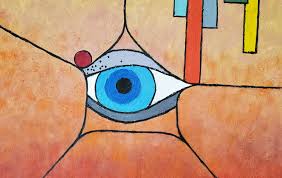Second Sunday of Lent
“Jesus took Peter, John, and James and went up the mountain to pray. While he was praying his face changed in appearance and his clothing became dazzling white.” Lk. 9:28
What if …
What if … the Transfiguration, so powerfully described in today’s gospel, was not really about a dramatic, dazzling change in Jesus, but was instead about the radical change that took place in the apostles? Was it really that they could see differently?
What if … today’s gospel is really about transfigurations that happen place in the lives of people around us – the kind of changes that make us ask ourselves:
Why haven’t I done the same?
What if … today’s classic story is ultimately a tale about you and me – and about moments in our life when God opened the eyes of our souls and we were able to recognize the divine within and around us?
What if …
I remember taking a course in theology years ago that changed my whole understanding of God. It was a stunning experience. It was as though a veil had been lifted – a kind of “transfiguration.” I could see differently.
Thomas Merton, the Trappist monk, tells the story about how he was doing something as simple as standing on a street corner in downtown Louisville when a transfiguration experience happened to him. The city and the people walking around began to glow. “There is no way of telling people that they are walking around shining like the sun.” What he discovered in that moment was that “the gate of heaven is everywhere!”
Perhaps what today’s gospel is trying to get us to see is that the Transfiguration of Jesus isn’t a spectacular, special effects incident that took place a long time ago. Rather, It’s a sweet glimpse of heaven that can come to any of us right now – if we are able to see it.
It can happen to a mother when she first views her just born infant. It can happen to a person reading scripture when suddenly their eyes open wide at words that speak to a deep place within them. It can happen while listening to a great symphony or enjoying a walk on a brilliant autumn day or watching the delight of children on a Christmas morning or standing in awe before a masterful piece of art.
Transfiguration moments are enchantment experiences that open our everyday mind to the heaven, already present, already here –
If we can see it.
Scripture describes these moments again and again. The Acts of the Apostles, for example, tells us Transfiguration is the awareness that “we live and move and have our being in God.” It is the gift of wisdom that Moses received when he went up on a mountain, just like the apostles in today’s story, and realized he was “standing on holy ground.” What Moses also grasped was that the famous “burning bush” he saw was not an earth-bound plant on fire, but the gift of vision in his eyes.
Like the apostles in today’s gospel, he could see differently.
To again quote Thomas Merton, “Life is this simple: we are living in a world that is transparent and the divine is shining through it all the time.”
If we can see it.
Like Mary Oliver does in her poem, “Mindful.”
Every day
I see or hear
Something
That more or less
Kills me with delight,
That leaves me
Like a needle
In the haystack
Of light.
It was what I was born for
To look, to listen,
To lose myself
Inside the soft world –
To instruct myself
Over and over
In joy,
And acclamation.
Oh, good scholar,
I say to myself,
How can you help
But grow wise with such teachings
As these –
The untrimmable light
Of the world ,
The oceans shine,
The prayers that are made
Out of grass?
How do we miss it all?
Unfortunately, again like the apostles in today’s gospel, we are often asleep. Consequently, we tend to miss the clues, the hints, the suggestions of Something afoot that is beyond our everyday recognition, Something that is way more than meets the eye.
This is what Lent is all about: a time to sharpen our inner eyes so that we can better see the “holy ground,” the “untrimmable light,” the “prayers that are made out of grass” in our lives.
Lent is the time to prayerfully ask:
What if I can truly be transfigured?
What would that look like?
What if?
Ted Wolgamot, Psy.D.
11809194.1
3/10/2019








